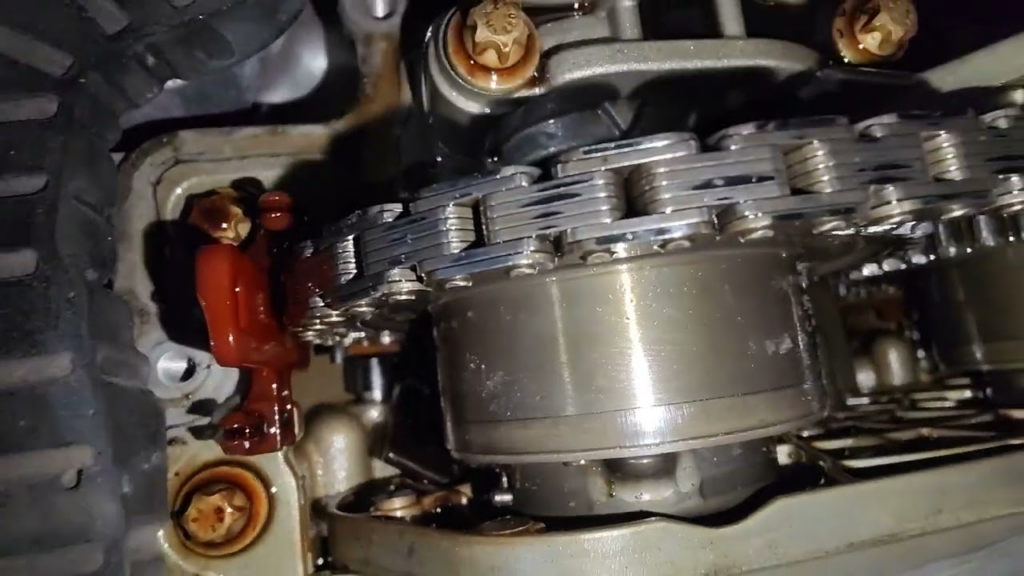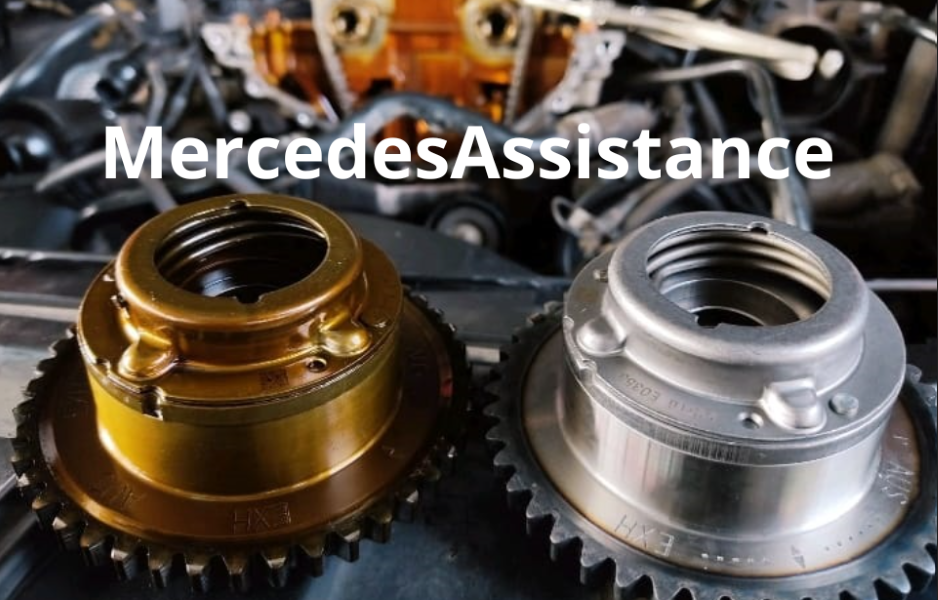Table of Contents
Engine rattling noise in a Mercedes can send shivers down any driver’s spine turning a smooth, refined ride into a worrisome symphony of clanks and vibrations. Whether the rattle strikes at cold start, under acceleration, or while idling at a red light, it’s often a red flag for issues ranging from a stretched timing chain or loose heat shield to worn engine mounts or failing lifters.
Ignoring it risks costly damage and lost peace of mind. In this guide, you’ll learn how to pinpoint where that metallic chatter is coming from, which components are most likely to blame, and the proven diagnostic steps and fixes that restore your Mercedes’ signature silence and performance.
Case Study: Engine rattling noise on cold start Mercedes C-Class
A loyal Mercedes-Benz customer owns a Mercedes C-Class W204 and presents with a cold start issue accompanied by an unusual noise on their C-Class equipped with the M271 petrol engine. After a quick diagnostic, a fault related to the camshaft position sensor is detected and recorded in the engine control unit.
Following a thorough inspection, the source of the problem is identified: failures in the camshaft timing variators for advancing and retarding the camshaft timing.

These variators play a crucial role in controlling the engine’s valve timing, which directly affects the vehicle’s performance and startup. When these components malfunction, the engine may have difficulty starting, particularly when cold, and abnormal noises may be heard during the startup process.

Fortunately, with early detection and prompt intervention, qualified technicians can replace the faulty variators, thereby restoring the proper functioning of the engine and providing the customer with a hassle-free driving experience in their Mercedes-Benz C-Class.

Conclusion
An engine rattling noise from your Mercedes engine during a cold start can stem from various issues, from oil circulation delays to worn timing chains. Regular maintenance and timely repairs are crucial to keeping your engine running smoothly.
If the noise persists, consult a professional mechanic to prevent further damage and ensure the longevity of your vehicle. Early diagnosis and intervention can save you from costly repairs and keep your Mercedes performing at its best.
Engine Rattling Noise on Cold Start in Mercedes Vehicles
Engine rattling noises during a cold start can be alarming, especially in high-performance vehicles like Mercedes. Understanding the causes and solutions for this issue can help maintain your vehicle’s health and ensure a smooth driving experience. This article delves into why your Mercedes engine might rattle on cold starts and what you can do about it.
Why Does My Mercedes Engine Rattle?
Hearing a rattling noise from your Mercedes engine can be indicative of several potential issues. Here are the most common causes:
Timing Chain Problems
- Wear and Stretching: The timing chain synchronizes the engine’s functions, and over time, it can wear out or stretch. A loose chain can create a rattling noise, particularly noticeable when the engine is cold and the oil hasn’t fully circulated.
- Faulty Tensioner: The tensioner maintains the chain’s tightness. If it malfunctions, the chain may rattle, often more noticeable during cold starts due to lower oil pressure.
Valve Lifters
- Hydraulic Lifters: These lifters can wear out or become clogged, producing a rattling sound. When the engine is cold, oil pressure is lower, exacerbating the noise.
- Lifter Tick: Inadequate lubrication or sludge buildup can cause the lifters to tick or rattle, a problem more apparent during cold starts.
Exhaust System Issues
- Loose Components: Heat shields or brackets can become loose, causing rattling noises that resonate throughout the engine bay.
- Catalytic Converter: A damaged catalytic converter can produce rattling if internal components break apart, often noticeable during cold starts when the exhaust system is under initial stress.
Engine Mounts
- Worn Mounts: Engine mounts secure the engine to the vehicle’s frame. If they wear out, the engine can move excessively, resulting in a rattling noise.
Oil-Related Problems
- Low Oil Pressure: Insufficient oil pressure leads to poor lubrication, causing engine components to rattle. This is particularly common during cold starts when the oil is thicker.
- Oil Quality: Using incorrect or low-quality oil can contribute to engine noise. Mercedes engines often require specific synthetic oils to function correctly.
Why Does My Timing Chain Rattle When It’s Cold?
A rattling timing chain during a cold start can be a concerning symptom for any vehicle owner. This noise is particularly noticeable in colder temperatures and can be due to several underlying reasons related to the mechanics and lubrication of the timing chain system. Here are the key factors that contribute to this issue:

1. Oil Circulation Delay
When the engine is cold, the engine oil is thicker and less viscous. This means it takes longer to reach and properly lubricate the timing chain and other components. During this initial period, the lack of lubrication can cause the timing chain to rattle. As the engine warms up and the oil thins out, it circulates more efficiently, reducing the noise.
2. Timing Chain Tensioner Issues
The timing chain tensioner is a crucial component that keeps the timing chain tight. It relies on hydraulic pressure from the engine oil to maintain this tension. When the engine is cold, the oil pressure is lower, which can cause the tensioner to operate less effectively. This can lead to a loose timing chain that rattles until the oil pressure builds up and the tensioner can fully engage.
3. Thermal Expansion
Engine components, including the timing chain and associated parts, contract when cold. This contraction can create small gaps and looseness in the system, leading to a rattling noise. As the engine heats up, the metal parts expand, reducing these gaps and eliminating the noise.
4. Wear and Tear
Over time, the timing chain and its associated components, such as guides and sprockets, can wear out. This wear is often more pronounced during cold starts because the components are initially less lubricated. The rattling noise can be an indication that the timing chain or tensioner is worn and may need inspection or replacement.
5. Oil Quality and Maintenance
Using low-quality oil or failing to change the oil at recommended intervals can exacerbate timing chain rattle. High-quality, manufacturer-recommended synthetic oils are designed to provide better cold-start protection and maintain optimal viscosity across a range of temperatures.
Regular oil changes are essential to keep the timing chain and tensioner well-lubricated and functioning properly.

6. Hydraulic Timing Chain Tensioner Bleed-Down
Some vehicles use a hydraulic timing chain tensioner that can bleed down when the engine is off for an extended period. This means that when you start the engine, it takes a few moments for the oil pressure to build up and re-tension the chain. During this brief period, the timing chain may rattle.
Hearing a rattling noise from your timing chain during cold starts is often a symptom of oil circulation issues, tensioner performance, or wear in the timing chain system. Regular maintenance, including timely oil changes with high-quality oil, can help mitigate this issue.
If the rattle persists or becomes more pronounced, it’s advisable to have a professional mechanic inspect the timing chain and related components. Early detection and repair can prevent more serious damage and ensure your engine runs smoothly.
How to Diagnose Engine Rattle ?
Diagnosing an engine rattle can be challenging, but it’s essential to identify the cause to prevent potential damage and costly repairs. Here’s a step-by-step guide to help you diagnose the source of an engine rattle:
1. Identify When the Rattle Occurs
- Cold Start: If the rattle occurs during a cold start and diminishes as the engine warms up, it could indicate issues with the timing chain, oil circulation, or lifters.
- Idle: A rattle at idle may suggest problems with the exhaust system, engine mounts, or loose components.
- Acceleration: Rattling during acceleration might be related to pre-ignition (knocking), worn bearings, or issues with the timing belt/chain.
- Deceleration: A rattle when decelerating could be due to loose or worn components in the suspension or drivetrain.
2. Listen to the Rattle
- Location: Try to pinpoint where the noise is coming from (front, rear, top, or bottom of the engine).
- Frequency: Determine if the rattle is constant, intermittent, or varies with engine speed (RPM).
3. Visual Inspection
- Engine Bay: Look for any loose components, such as heat shields, brackets, or bolts.
- Exhaust System: Check for loose or damaged parts, including the catalytic converter, muffler, and hangers.
- Belts and Pulleys: Inspect the serpentine belt, pulleys, and tensioner for wear or looseness.
4. Check Oil Level and Quality
- Oil Level: Ensure the engine oil is at the proper level. Low oil can cause insufficient lubrication, leading to rattling noises.
- Oil Quality: Examine the oil’s condition. Dirty or degraded oil can fail to lubricate engine components properly.
5. Use Diagnostic Tools
- OBD-II Scanner: Connect an OBD-II scanner to check for any error codes that might indicate issues with sensors or engine components.
- Stethoscope: Use an automotive stethoscope to listen to specific areas of the engine, helping to isolate the noise source.
6. Inspect the Timing Chain/Belt
- Visual Check: Inspect the timing chain or belt for signs of wear, looseness, or damage.
- Tensioner: Check the tensioner’s condition. A failing tensioner can cause the timing chain to rattle.
7. Examine the Valve Train
- Lifters and Pushrods: Inspect hydraulic lifters and pushrods for wear or clogging.
- Camshaft: Check the camshaft and associated components for wear or damage.
8. Inspect Engine Mounts
- Visual Check: Look for cracks, wear, or damage in the engine mounts.
- Movement: Check for excessive engine movement when revving the engine, which can indicate worn mounts.






Leave a Reply